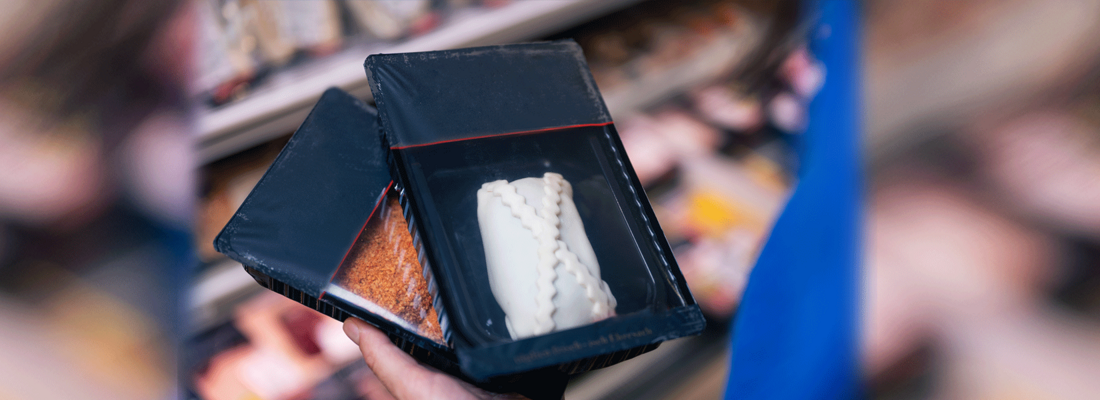Sukano and Emery Oleochemicals announced the launch of their jointly developed PET Antifogging compound for direct food contact PET packaging.
Two years of intensive testing and simulations of end use applications in real life scenarios in research and development laboratories resulted in this new antifogging compound. It is formulated to be used at 100% in cold applications to prevent fogging in packaging surfaces.
The product is designed for all kinds of Coex-films (rigid and oriented) having Sukano´s co-polyester-compound in one cap-layer of a film extrusion line A/B structure and PET as core-layer.
The resulting product performance is so robust that, even after orientation in several different ratios, the antifogging function remains active and integral, and the film remains transparent.
The challenge of existing technologies
Fogging, or the undesired formation of small water droplets on the surface of films, is a common problem when packing moisture-containing products such as fruit, vegetables, or meat in a tight container. When the water condenses on the surface, it often forms droplets due to the lower surface tension of plastic materials. These droplets ‘fog’ the film and hinder a clear view into the packaging. This not only makes packed food look less fresh and less attractive, but sensitive applications can even be damaged or have their shelf life reduced due to the presence of water droplets.
Antifogging agents solve these issues by inhibiting the formation of water droplets through a homogeneous, transparent water layer. However, the PET food packaging industry is longing for an antifog performance in the form of a compound that can be used in their packaging materials to replace the painful existing coating process.
Antifog coatings are well known and in use, but have the downside of adding another operational step to filmmaking. And typical solution-based coatings are inactivated when the surface is washed. As an internal additive in plastics, antifog additives work on polyolefins due to the migration readiness of the polar additive in the nonpolar polymer and the low glass-transition temperature. However, polyolefins have limitations in recyclability and gas barrier performance. PET, on the other hand, is a well recyclable packaging material with good barrier performance and transparency. However, the current antifog additives on the market do not work in PET. Due to the polymer polarity, coupled with the glass transition temperature. Until today's announcement, the industry had to make do with the limitations faced by polyester packaging structures.
It is an extensive understanding of polyesters, molecule design and packaging processes that worked as the foundation for this new antifog compound for polyester packaging applications.
Partnership driven by specialized companies to overcome the challenge
Antifogging agents are already common products in the portfolio of Emery Oleochemicals’ Green Polymer Additives business. “However, additives that work well in flexible vinyl meat wrap films or polyolefin films do not necessarily work well in PET,” says Dr. Annika Heinrich, Technical Development Manager at the production site in Loxstedt, Germany. “Polarity, crystallinity and other physical or chemical characteristics of the base polymers are too different, and the additive molecule design needs to take that into consideration.”
“At a very early stage, we understood that to be successful in producing effective antifogging agents for PET we must find a strong masterbatch specialist partner,” adds Dr. Christian Mueller, Global Technical Market Manager by Emery Oleochemicals´ Green Polymer Additives. “Antifogging for PET is a very challenging application in polymer additives, and Sukano is one of the most renowned companies when it comes to developing functional additive masterbatches and compounds. Sukano’s significant experience creating state-of-the-art masterbatches and compounds for PET applications made them an ideal fit for this joint development project.”






